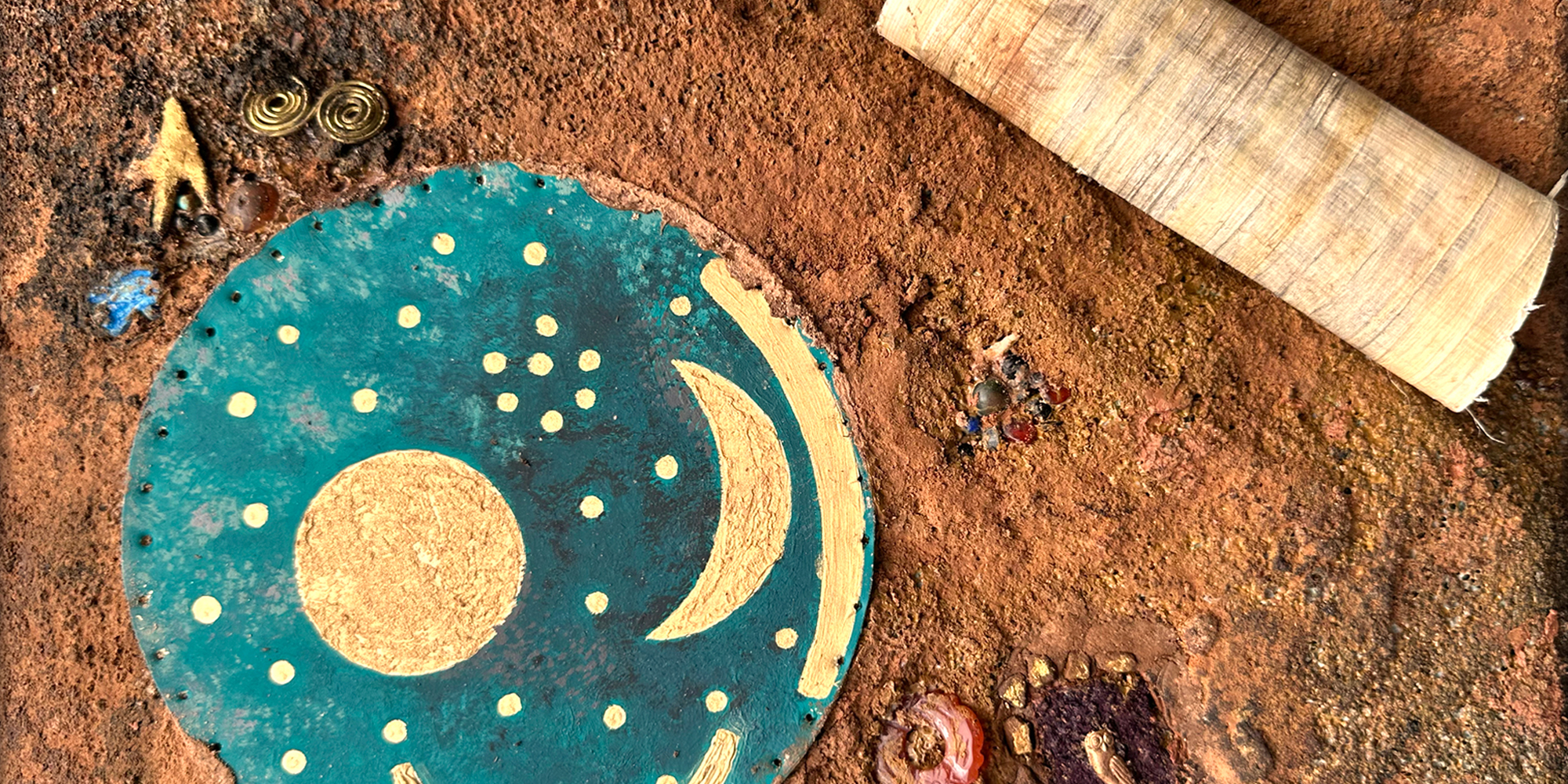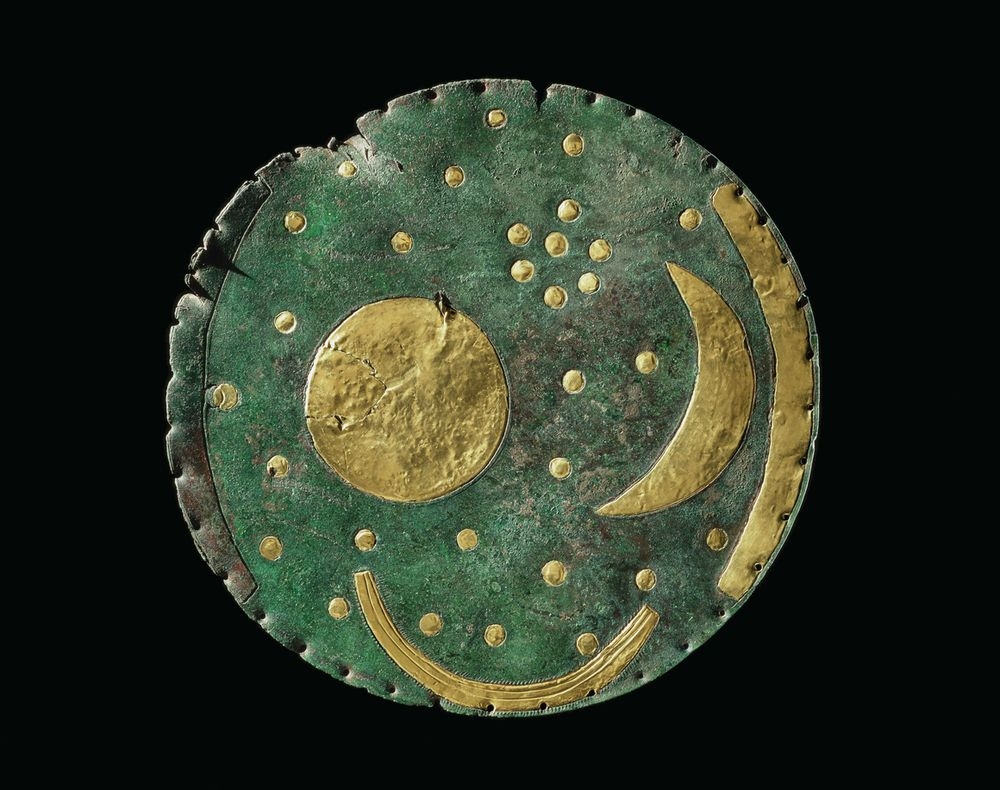Scroll for Glaukos the Athenian’s Laurel elevation. Words and translation by Suphunibal Rabat. Design, art, and calligraphy by me.
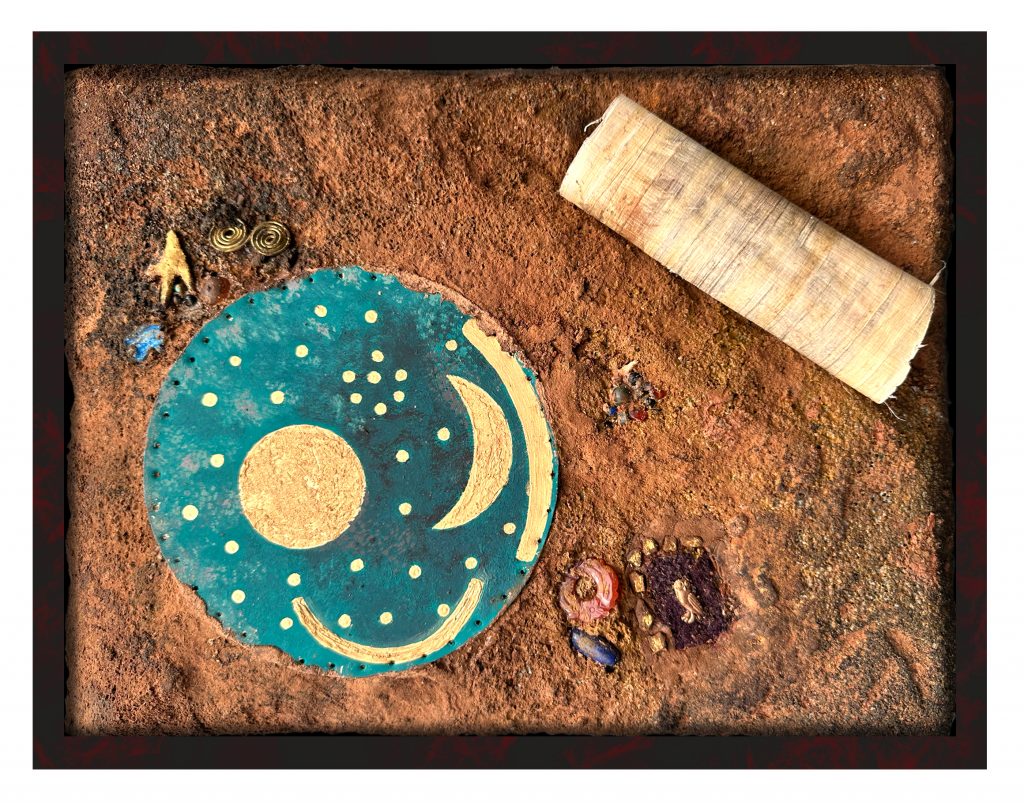
This scroll is bit different from my usual, in myriad ways. Not least because I was actually there to see it presented in person for once (yay!), and because it was created on site, but—and most importantly—it’s an assemblage more about the recipient’s interests than a specific place-time.
This also means I don’t have much art historical to say about it, which I consider the meat and potatoes of my SCA efforts.
Still. Let’s…dig in. 😎
the big dig
For a previous scroll, I had planned-but-not-enacted a shadow box of an archaeological dig, which means I already had the inspiration and a lot of exiting materials on hand. So when I was asked to help with Glaukos’s scroll, I knew immediately it was time to use them. No one else I know in the SCA more deserves a dig-in-a-box than he does. Providentially, it was as if the materials were just waiting for him.
Glaukos requested the Nebra Sky Disc in his ICOP (In Case of Peerage document), which sounded to me like a great idea for a focus. I began by researching options for other artifacts to place in association around it, items which made sense in terms of location and time. Because, as I said before, I really want my scrolls to hang together that way.
I considered fabricating a version of a dagger from another find from the Aunjetitzer/Únětice culture, the Leubingen tumulus (below, left), which looks remarkably similar to the bronze swords found alongside the Sky Disk (below, middle). I have pottery experience, so I was also planning to make some sherds of Corded Ware based on that found in another related site known as the grave of Helmsdorf (below, right). I also thought about resurrecting my very dusty knowledge of flintknapping, and making something that might, if my skill held true, have ended up more artifact than debitage.
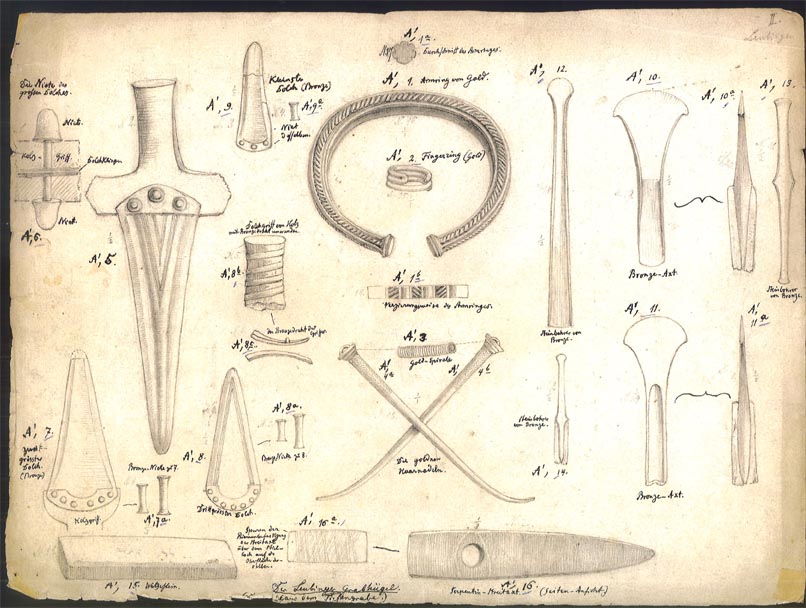
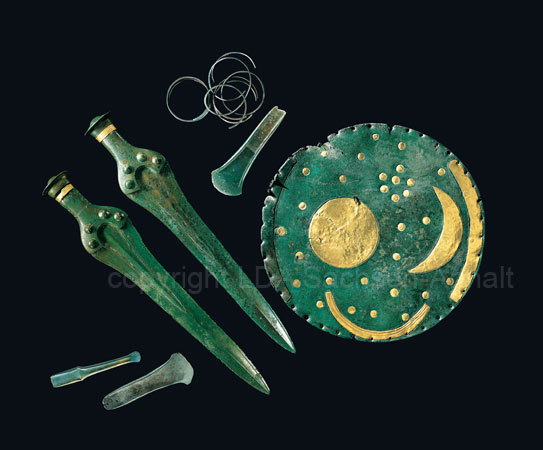
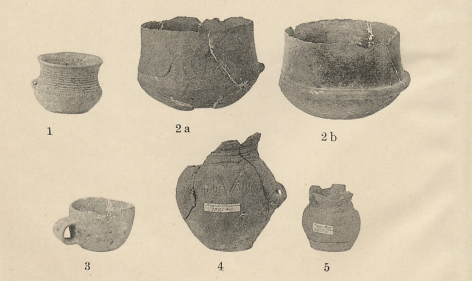
And as for the words, the plan was to construct a plausible Balto-Slavic inscription in the way Kolfinna and I have both done previously—I with Kolfinna’s Golden Dolphin, and and the two of us together for Suphunibal’s Laurel.
However, partway through the ideation phase Suphunibal suggested that it might make more sense simply to add other things Glaukos is interested in, rather than intend to construct a realistic archaeological assemblage. I was unsure at first (again, keeping the art of a scroll to within the same plausible time and space is usually very important to me), but in the end, we went with the broader theme.
This had two benefits.
First, because in the beginning I thought the scroll was going to be a large group project, this new format would more easily allow multiple people to contribute items to the whole. Indeed, although the project ultimately shifted, alongside her words and transliteration Suphunibal did contribute the array of small items to plant in the ground with the disk and the scroll.
The second benefit concerned the setting of the words. If the artifact didn’t have to fit within the timeframe of the Disk, we had a lot more leeway. Clay tablets? Ingots1? Gold amulet2? Papyrus? Papyrus seemed best within our constraints, so papyrus we did.
But more on that later. Right now, the disk.
the disk
The Nebra Sky Disk was found illegally in 1999 by “treasure hunters” looters, greatly disrupting its archaeological provenience. In spite of this, researchers generally agree that it was created in the Early Bronze Age (ca. 1800–1600 BCE)3. Testing has revealed that its materials come from as wide a spread as Austria, the Carpathian mountains, and Cornwall4.
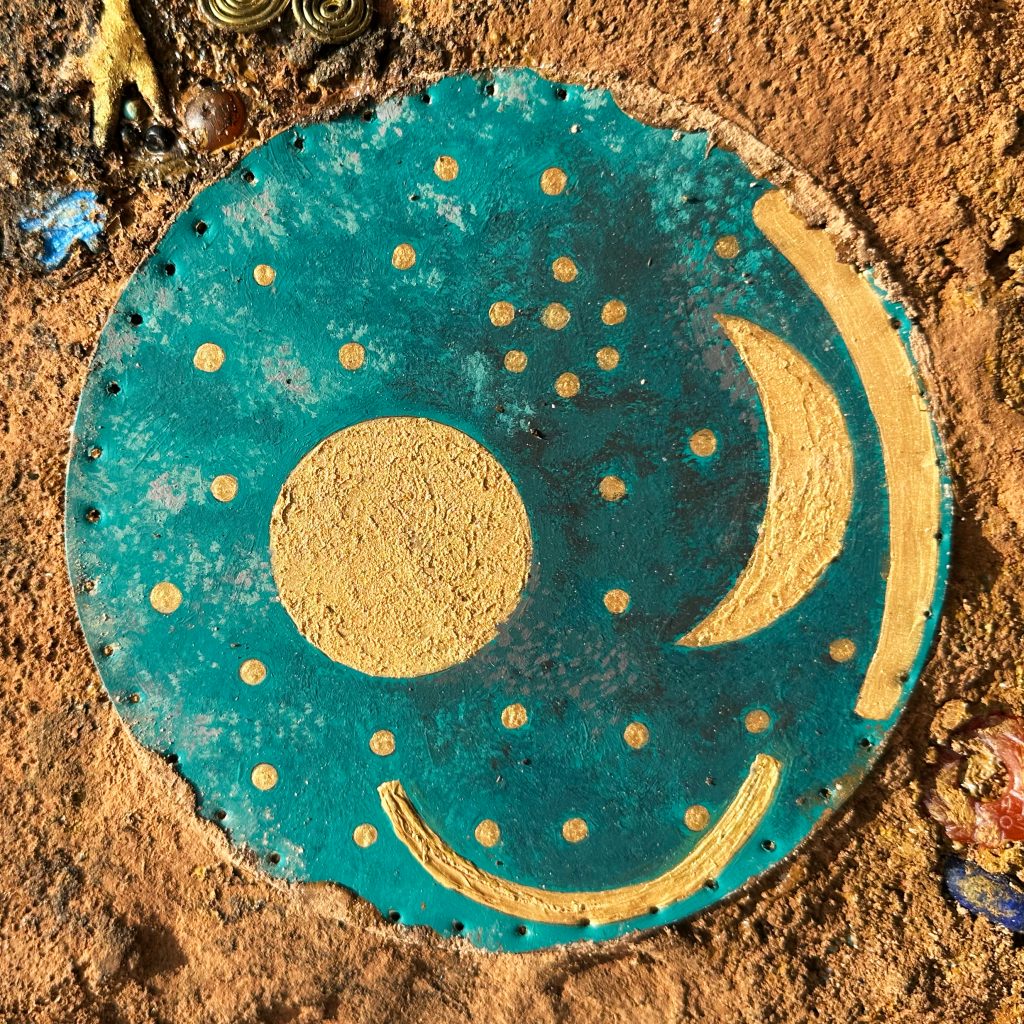
Originally, the bronze disk was created in five stages5, wherein the bronze was carved, the gold sheets inlayed, and the bronze edges hammered over to secure the sheets in place6. My version is also bronze, but the gold was painted on top, textured in my best attempt to replicate the existing find. (Doing so was rather fun). And rather than rely on the chemical vagaries of real patina, this version is a more stable and reliable layer of paint. It’s also half the usual size, the better to fit in multiple items alongside it.
The result is a pleasing facsimile of an ancient find, its sky boat and Pleiades shining just as brightly out of the deep sky as in the original.
the assemblage
I was grateful that Suphunibal came prepared. On site we selected a range of “artifacts” to highlight Glaukos’s interests, including:
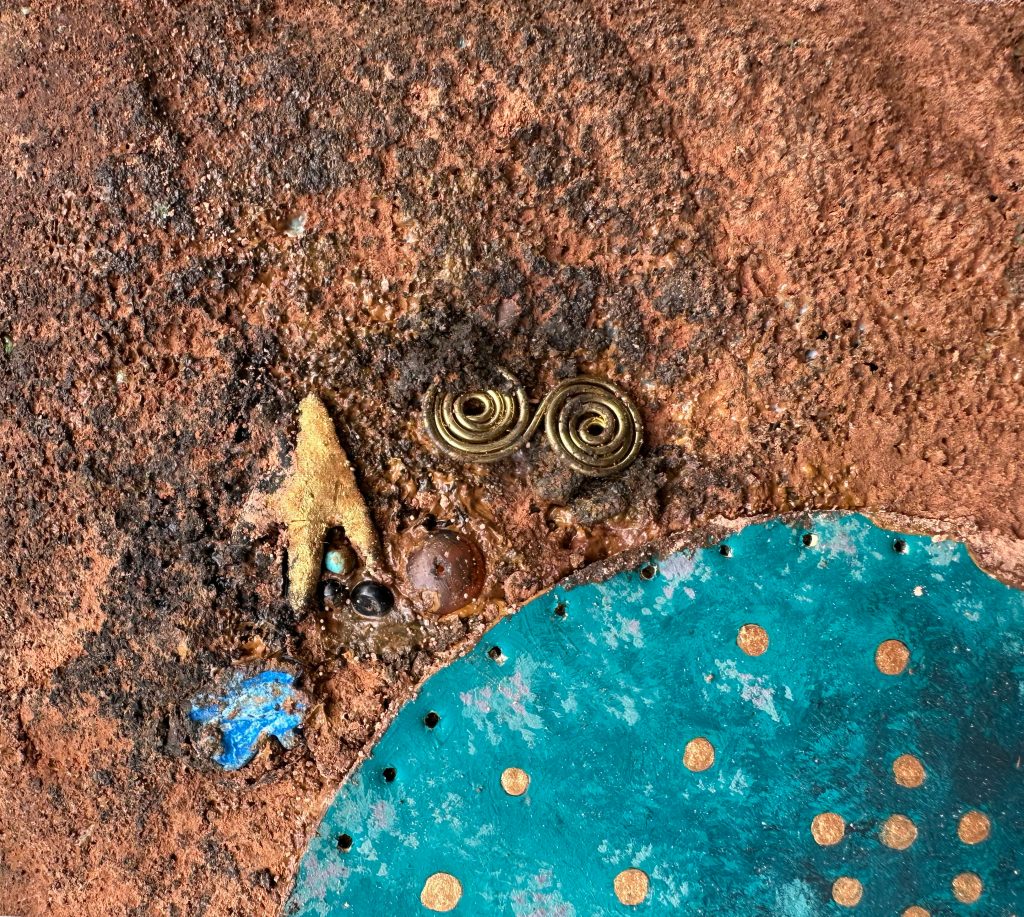
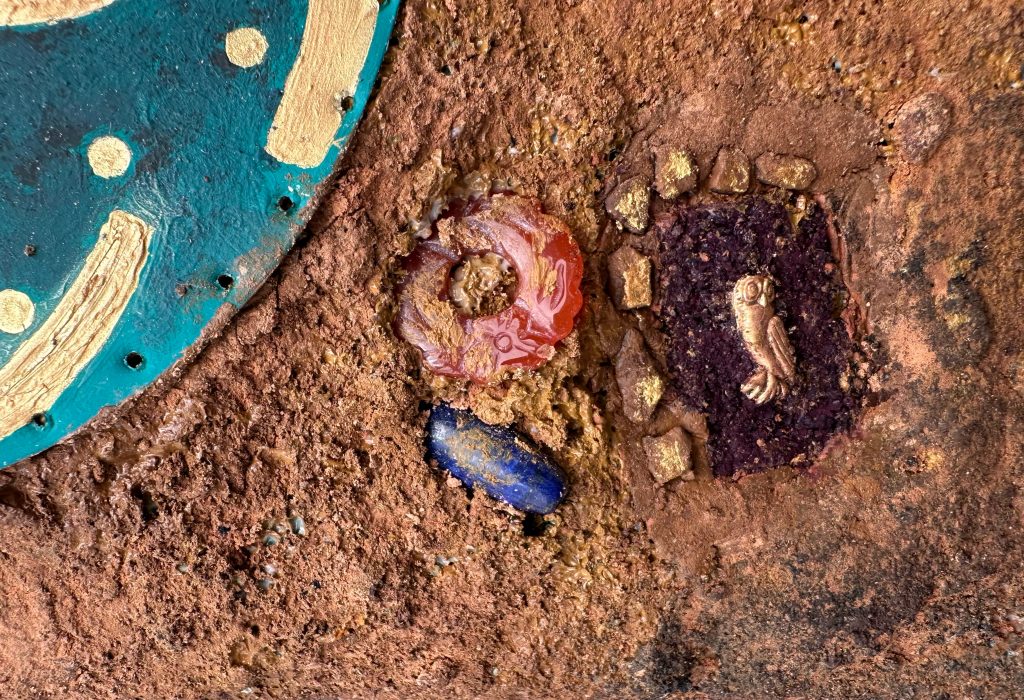
- a carnelian wreath
- an arrowhead
- many assorted beads of appropriate materials and shapes
- a sliver of “bone”
- a faience eye
- a bronze wire pin, previously made by S herself
- a lapiz bead
- and, in a nod to his heraldry, a golden owl surrounded by a purple feature in the dirt , and some strategically-placed stones dusted with gold. (Stones from Bow Street, as it happens. There be Pennsic in that there scroll.)
Added to the disk I’d made previously and the papyrus scroll to come, the gestalt felt like something that would resonate as Glaukos.
the matrix

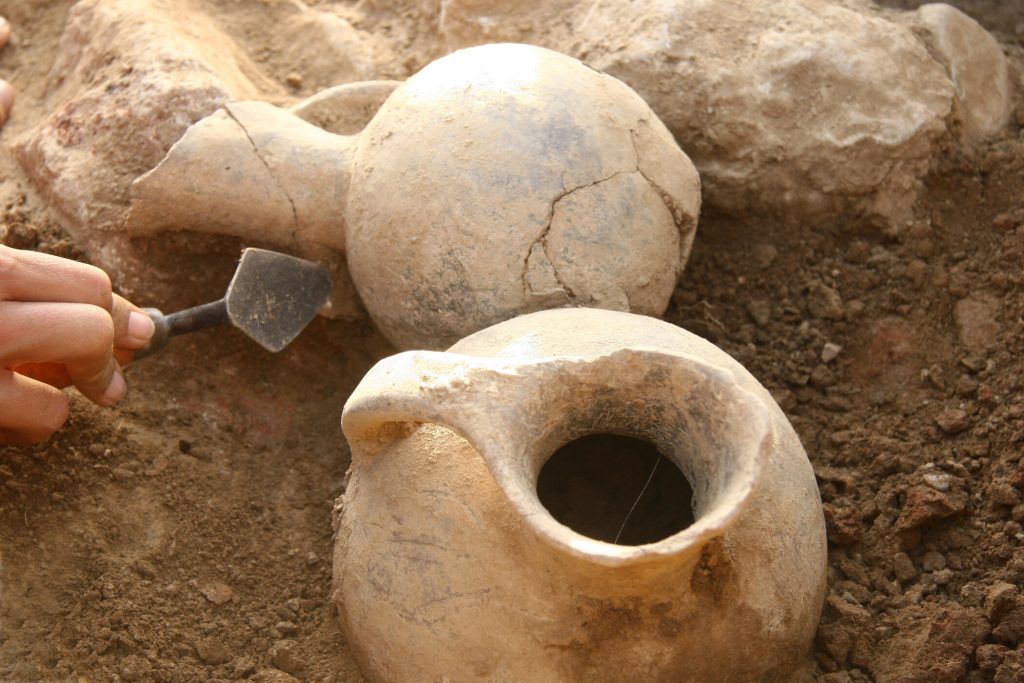
Çukuriçi Höyük (© ERC Prehistoric Anatolia/F. Ostmann)
My agéd archaeological experience was in the Northeastern United States, so before I embarked on this journey I researched what the soil would look like. Glaukos is Athenian, so based on a variety of photos of Northern Mediterranean digs I mixed up a color palette of ochres, pale reds, sands, and sepias. Gritty and heavy bodied acrylic media helped create texture, along with red clay powder from Suphunibal’s stash. Once I added lamp black and raw umber as subtle ash deposits, the illusion was complete.
I’m really quite proud of how it turned out—especially given the fact that I was creating this during one of the most rainy and humid Pennsics of my experience. If I forget what it’s made from, I can almost smell the petrichor and feel the dirt under my fingernails.
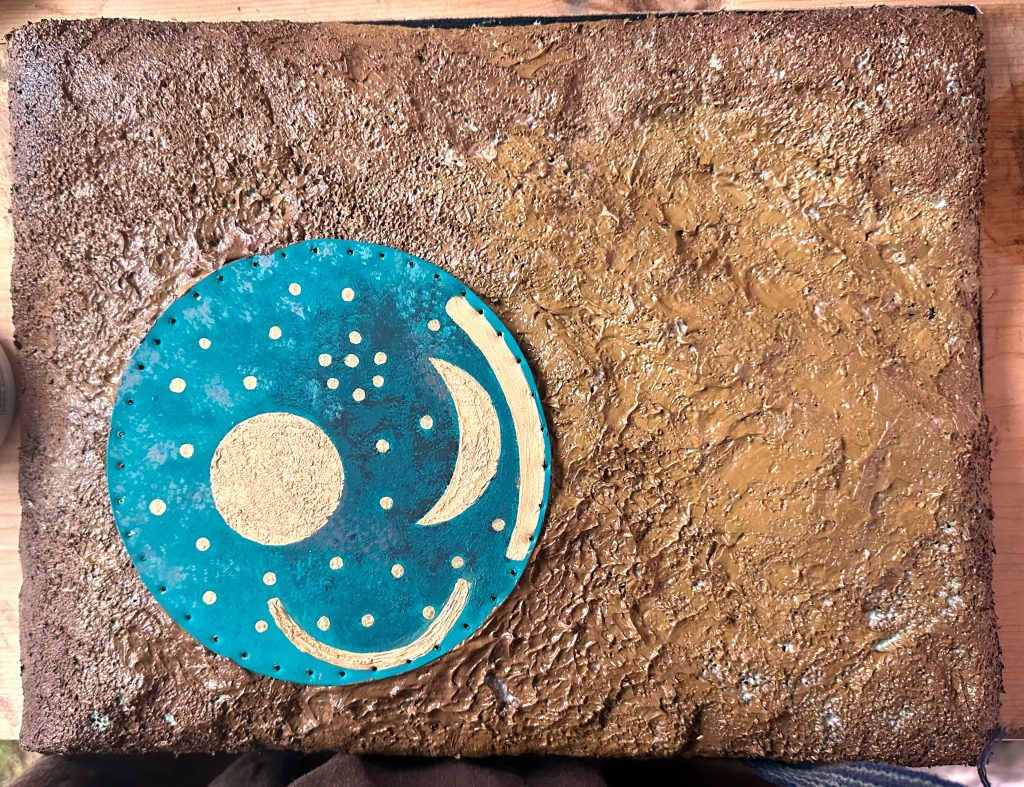
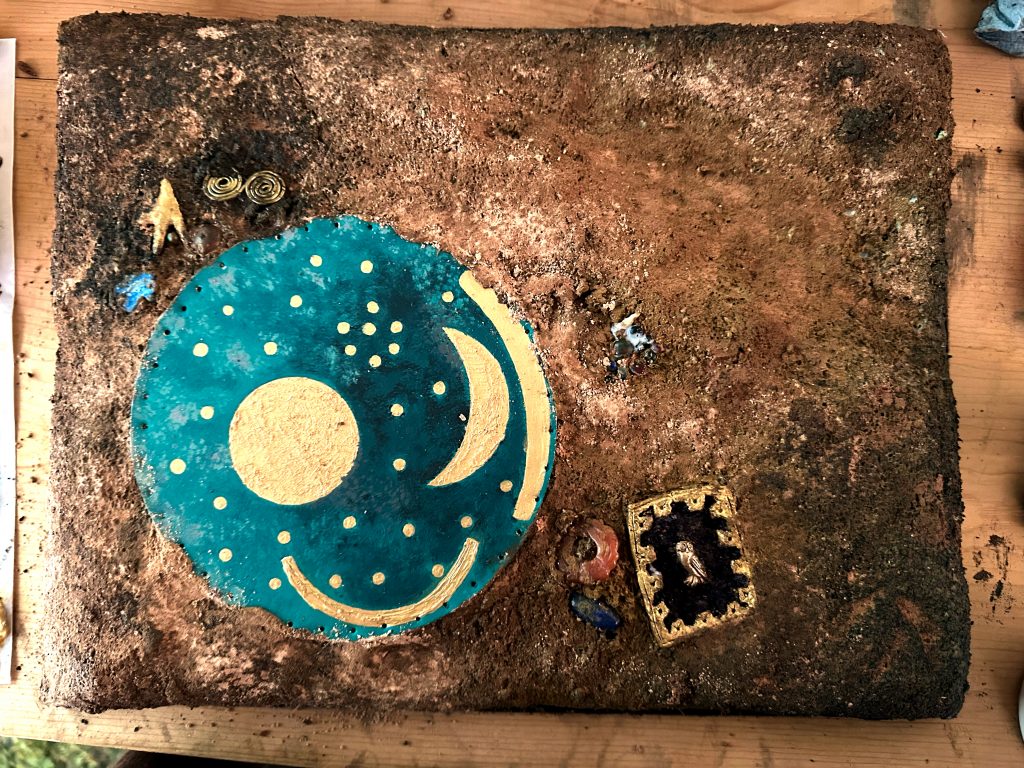
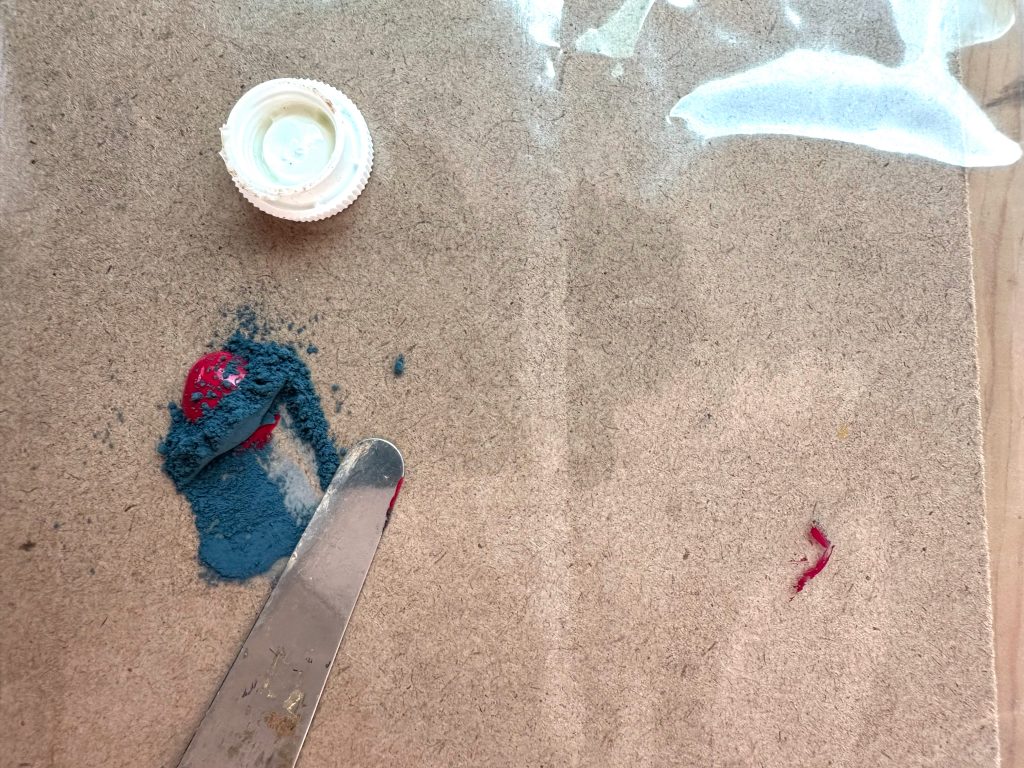
sing of him, muse
While Suphunibal composed and transliterated the words into Ancient Greek, I was putting the final touches on the big dig. And when she was done, she handed them off for me to make them material. I aged a piece of papyrus, and wrote the words in brown ink with a stylus. In the blank space at the bottom I painted his arms.
Our Society’s requirement to include arms on scrolls is complicated when the scrolls reflect places and times which lack them, and particularly so the further the world of the scroll gets from Late Middle Age Europe.
This scroll is thousands of years before that.
So while the body of the piece contains a nod to his arms, I did my best to fit that nod within the world of the scroll. It therefore doesn’t tick all the required heraldic boxes. By flipping the owl and changing it to reflect the Athenian style on pottery and coinage, and then adding the arms themselves to the bottom of the furled papyrus, I could include what was required without the (much more modern) arms knocking viewers out of the illusion.
And then, at the very end of the creation process, I called an audible. The physical papyrus scroll itself was originally intended to attach at the top so it could be unfurled if Glaukos took it out of the frame. But ultimately I decided that, given the way I’d carved the setting, it created the perfect nest for the scroll without it. This way Glaukos could literally remove a scroll from the dirt should he wish to.
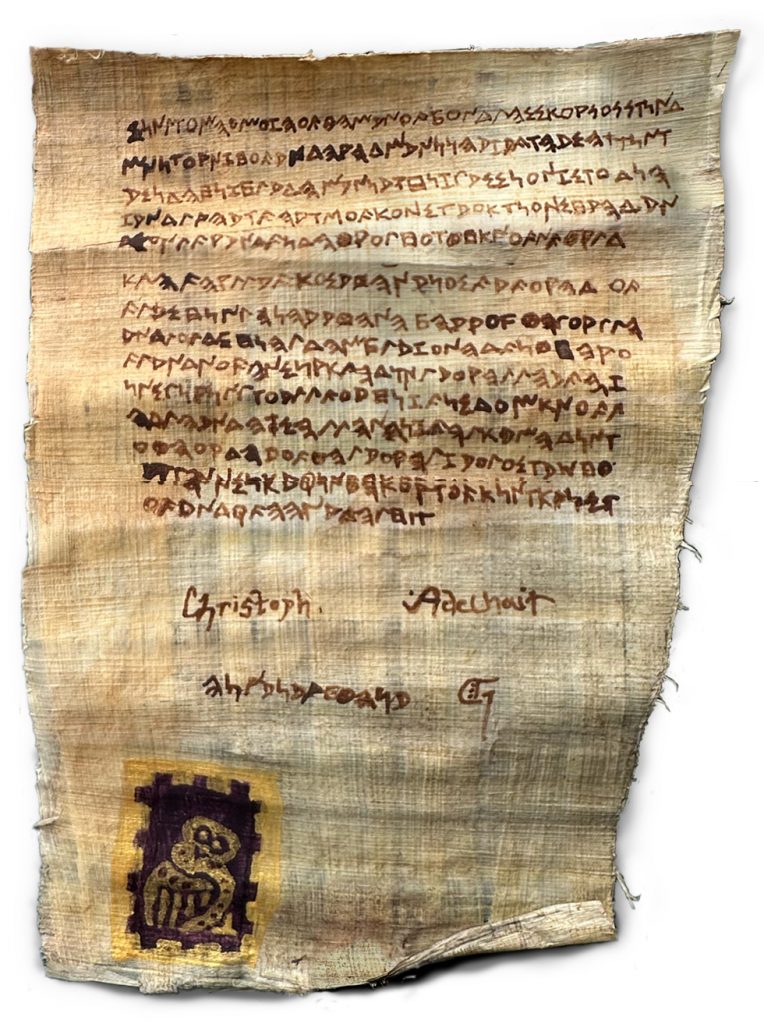

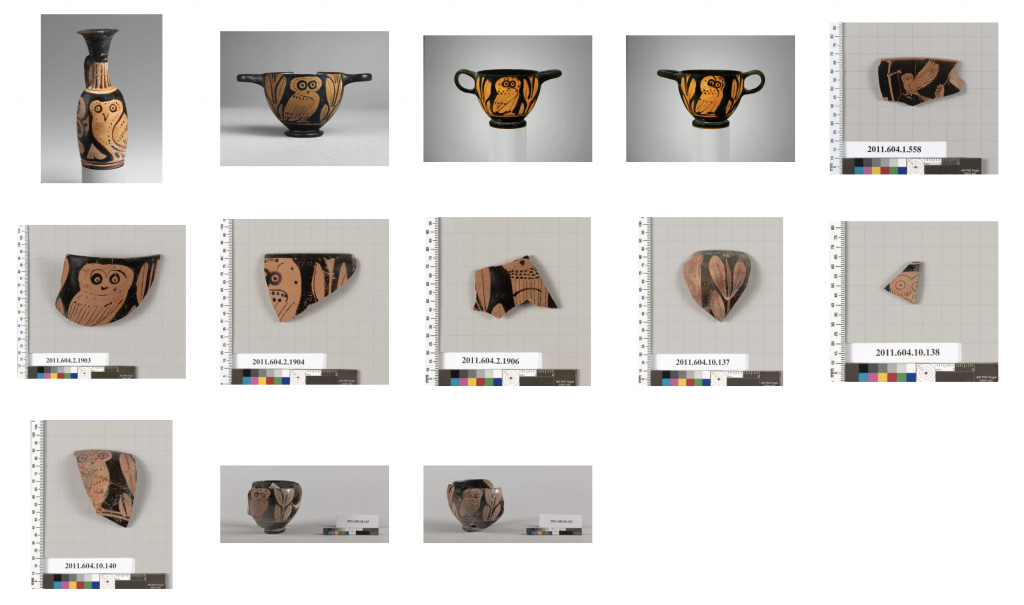
This solution felt a lot cooler. Who wouldn’t want to take an item out of the place carved for it, play with it, and put it back? Countless children’s toys are based on this principle.
It’s a little extra detail of joy. It made me smile, and I hope it makes Glaukos smile, too.
thanks
I owe thanks to Suphunibal for the donations of small artifacts, papyrus, red clay, and tools. When I had to radically adjust my expectations, your extra supplies were a boon. I’m grateful for them.
Thanks also to Alasdair for free reign of the toolbox, for the trust and generosity alongside the ruler and cutting blade. Your timing was perfect.
Deepest thank you to Vee for letting me dominate the space behind Dancing Pig Pottery and turn it into a crafting den. Your (and Roan’s and Rahe’s) patience, spirit, and humor kept me and the work going. I honestly couldn’t have done it without you.
And thanks are also due to Kolfinna, Panda, and Indigo. Thanks for being you, while I was being this. Making a scroll on site is never my first choice, so your company was more helpful than you know.

Honestly, thanks to everyone in my extended Pennsic family who so much as sat with me or brought me a drink or joked about chocolate cake. This started out being a large group project, and then it wasn’t. And in the end, it kind of was. 🧡
One of the benefits to having been a maker and artist for most of my life is the trust in my own ability to improvise. When the plan changed, I knew that if I tapped into my forty years of experience and didn’t overthink it, I could get the job done. And hell: resilience and flexibility often turns up unlooked-for gems, and I suspected the result might even be better than planned. All I had to do was dive in, and swim with the current. (Easy to do, with such a wet Pennsic.)
In the end, I’m delighted with the result. I hope Glaukos is, too.
Congratulations, my friend.
notes
- These Late Cypriot copper ingots would have been fun, if a bit complicated to replicate within the time allotted. https://www.researchgate.net/publication/280727449_Miniature_Ingots_from_Cyprus ↩︎
- I’ve done this before. See Lanea’s Opal for an example of the depths of research I’ve plumbed in the attempt. ↩︎
- Ernst Pernicka et al, “Why the Nebra Sky Disc Dates to the Early Bronze Age. An overview of the Interdisciplinary Results.” In Archaeologia Austriaca 104, Österreichische Akademie der Wissenschaften 2020, S. 89-122. https://doi.org/10.1553/archaeologia104s89 ↩︎
- For the gold, see https://doi.org/10.1127/0935-1221/2011/0023-2140, and the for the tin of the bronze, see https://onlinelibrary.wiley.com/doi/10.1111/j.1475-4754.2010.00515.x Thorough testing of the bronze was integral to its overall dating and verification. See above. ↩︎
- https://www.landesmuseum-vorgeschichte.de/en/nebra-sky-disc/the-phases-of-the-sky-disc ↩︎
- https://www.landesmuseum-vorgeschichte.de/en/nebra-sky-disc/from-copper-ore-to-celestial-image ↩︎

